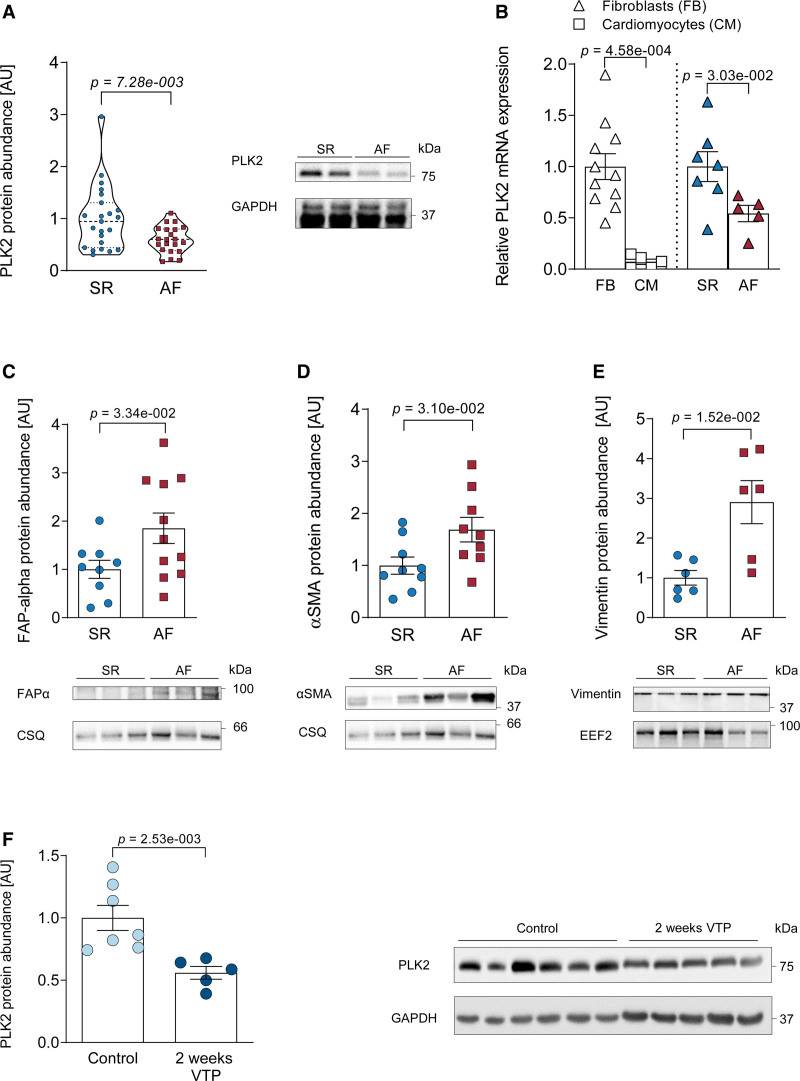Figure 1.
PLK2 (polo-like kinase 2) expression is reduced in clinical as well as experimentally induced atrial fibrillation (AF) and myofibroblast markers are concomitantly increased. A, Quantification of PLK2 protein abundance in human right atrial tissue from sinus rhythm (SR) and patients with AF, normalized to GAPDH (SR [n=23], AF [n=21]; results are given as mean±SEM determined by a Welch t test). B, Left, expression of PLK2 mRNA (qPCR) normalized to GAPDH as housekeeping gene in primary human atrial fibroblasts vs cardiomyocytes from patients with SR. Right, mRNA levels of PLK2 normalized to GAPDH as housekeeping gene in human atrial fibroblasts from patients with SR and AF (FB [n=11], CM [n=5], SR [n=7], AF [n=5]; results are given as mean±SEM, P value was determined by a Mann-Whitney U test). C, Whole-tissue protein abundance of FAPα (fibroblast activation protein alpha) in SR and AF, normalized to calsequestrin (CSQ) (SR [n=9], AF [n=11]; results are given as mean±SEM, P value was determined by an unpaired, 2-tailed t test). D, Protein abundance of the myofibroblast marker protein αSMA (alpha smooth muscle actin) in whole tissue from SR and AF, normalized to CSQ (SR [n=9], AF [n=9]; results are given as mean±SEM, P value was determined by an unpaired, 2-tailed t test). E, Protein abundance of the fibroblast marker vimentin in SR and AF atria, normalized to EEF2 (eukaryotic-elongation-factor-2; SR [n=6], AF [n=6]; results are given as mean±SEM, P value was determined by a Welch test). F, Quantification of atrial PLK2 protein abundance in a canine model with increased susceptibility to AF (ventricular tachypacing-induced heart failure) at baseline (control) and after 2 wks of tachypacing (control [n=7], ventricular tachypacing [VTP; n=5]; results are given as mean±SEM, P value was determined by a Mann-Whitney U test). AU indicates arbitrary unit—relative protein expression normalized to the indicated housekeeping protein and the respective control group.

